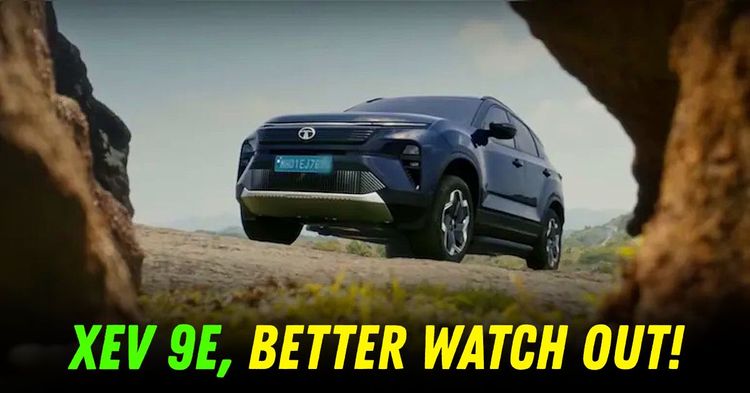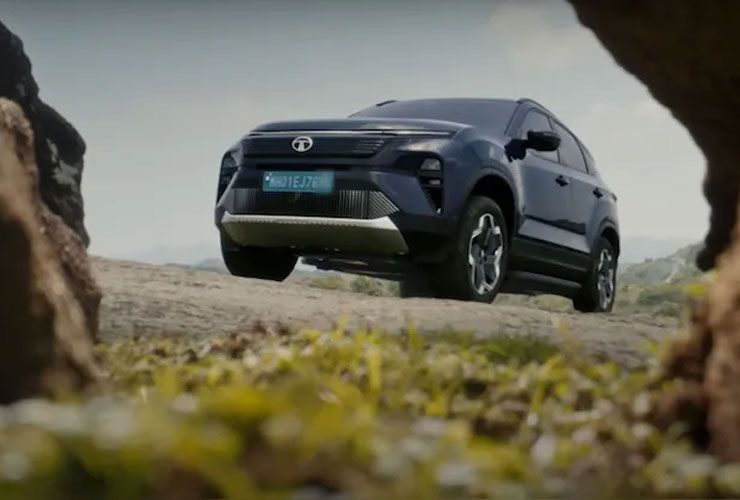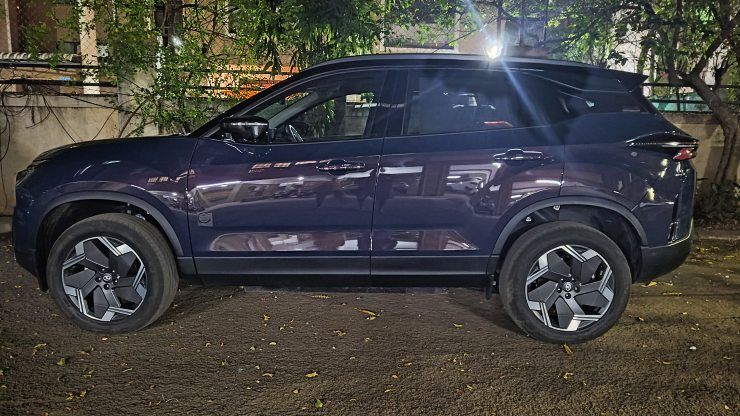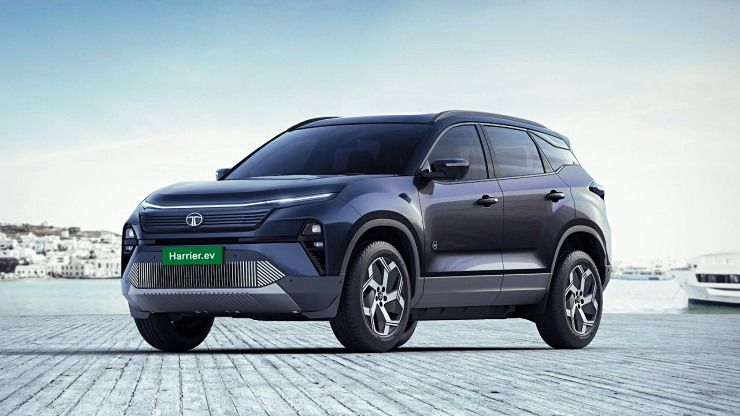The Tata Harrier.EV Will Easily Beat The Mahindra XEV 9e In This Area


Tata Motors is set to launch its most ambitious electric vehicle in India- the Harrier.EV. With less than two days left for the market launch, the manufacturer has already released the TVC which gives a closer look at its features, powertrain and more. In the Indian market, the Mahindra XEV 9e could be one of the all-electric Harrier's strongest rivals. Going by what the TV commercial reveals, the Harrier.EV could easily outperform the Mahindra XUV 9e in one key area: performance!

Tata has based the Harrier.EV on the Gen 2 Acti.EV platform. This is an electrified platform and stands close to the ICE (Internal Combustion Engine) version in overall proportions. It will come with a multi-link rear suspension and offer Vehicle-to-Load (V2L) and Vehicle-to-Vehicle (V2V) charging. You don't get these features on the XEV.
The platform can accommodate heavy battery packs and the Harrier. EV will likely come with a 75 kWh unit. It will have a more orthogonal, standardised structure.

The XEV 9e, on the other hand, is built on a born-electric platform- the INGLO. It has been developed in-house by Mahindra. Mahindra offers two battery pack choices- 59 kWh and 79 kWh.
The XEV 9e's powertrain produces 282 hp and 380 Nm. The electric motor, in its case, powers the rear axle. The Harrier.EV, on the other hand, will have 369 hp and 500Nm on tap- 87hp and 120 Nm more than the XEV's output. This marks a clear performance upper hand, and makes the Harrier EV the most powerful Indian electric car.
Tata Motors says that the Harrier.EV will be able to do the 0-100 kph sprint in under six seconds, due to its incredible power-to-weight ratio, and the capable powertrain. The XEV, on the other hand, takes 6.8 seconds to accelerate to 100 kph from a standstill. The Harrier.EV is definitely the faster of the two.

The Omega Arc underpinning the diesel Harrier doesn't support All Wheel Drive or Four Wheel Drive (4WD). The Acti.EV-based Harrier.EV will come with a dual-motor setup and will thus have AWD. The torque bias here, however, will be towards the rear. The XEV on the other hand, has a Rear Wheel Drive (RWD) layout.
In high-speed and low-traction scenarios, the AWD will give it more road grip. The vehicle will mark the return of AWD to the Tata lineup. It will be quite capable off-road. The manufacturer showcased the SUV's off-road abilities in the TVC and other videos. We saw it climb to the top of Elephant Rock in Kerala, which has a height of 3937 ft.

On the Harrier.EV, the AWD tech is called QWD. It can be activated by engaging its 'Off-Road' mode. The electric SUV has two electric motors, each powering an axle. There are multiple sub modes like 'Rock Crawl' and 'Sand'. These will tweak the torque distribution and bias to suit various terrains and traction scenarios. The driver gets to watch and monitor the torque distribution, on the instrument console. The vehicle will also come with a dedicated 'Boost' mode.
Both the Harrier.EV and XEV 9e feature good kit levels. However, the Tata EV has a number of features which give it a clear upper hand over the Mahindra. The all-electric Harrier will come with a 'Transparent Mode'.

This is in fact, an adaptation of Land Rover Defender's ClearSight GroundView technology, and uses camera feeds to show the terrain under the car. This feature, further, enhances the vehicle's off-road abilities. It will also have augmented reality (AR) tech which projects its wheels on the terrain it's traversing. This will be of great use on your adventures with the Harrier.EV.
The Mahindra comes with no off-road specific features or tech. It is in fact, something you'd want to keep strictly on the tarmac.